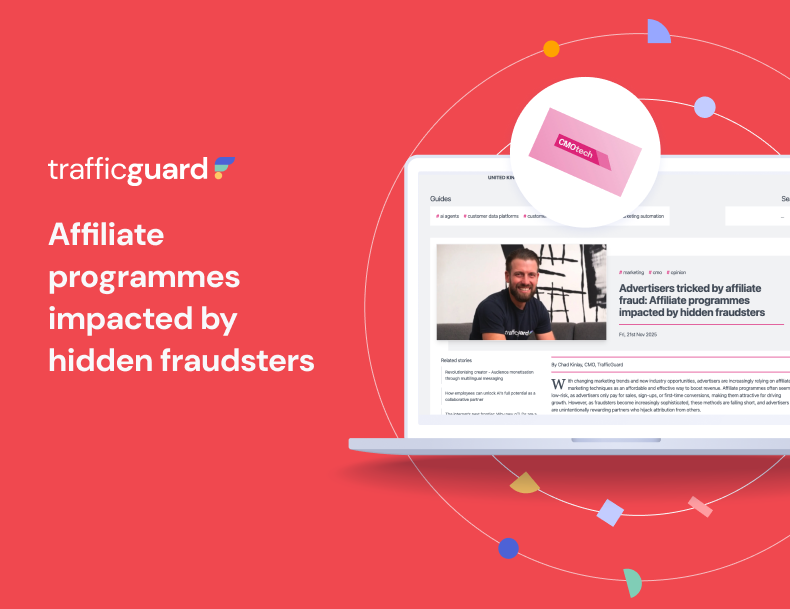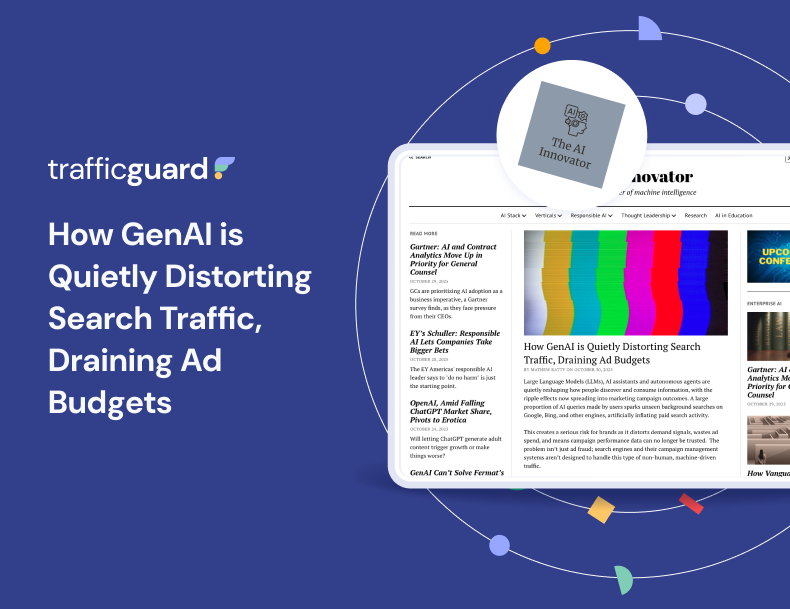Programmatic vs. Performance: Can changing cost models protect you against ad fraud?

This article was written by TrafficGuard Founder and COO, Luke Taylor for Branding in Asia
With each passing year, we discover yet another daunting statistic around the damage ad fraud has inflicted on our digital ecosystem. According to a whitepaper by TrafficGuard and Juniper Research, ad fraud is forecast to cost APAC businesses US$56 billion by 2022.
It’s understandable then that publishers and advertisers are on a bona fide manhunt for the perpetrators, and are often quick to point blame at the most obvious target – their ad networks. As a consequence, we’re beginning to see advertisers abandoning performance marketing solely in favor of programmatic. When all is said and done, we must ask ourselves: Are we focusing on the right issue here, or are we nominating ad networks (and by association performance marketing) as a scapegoat?
Analyzing the problem
Before jumping headfirst into the situation and proposing solutions, we need to unpack the fundamental issue of why ad networks and performance marketing get such a bad reputation.
Ad networks have faced several challenges, which have branded them as the primary antagonists of the industry. Ever since Uber filed a multimillion-dollar lawsuit against media agency and their contracted ad networks for pumping ad spend into non-existent/fraudulent inventory, it drew international attention to the scourge of ad fraud among networks.
However, the circumstances behind these problems are far more complex than many might think. It all starts with unrealistic demands: we understand that ad networks do make money -knowingly or unknowingly- from fraud helping them meet the sheer volume, cost and speed demands of their clients.
Combine this with the fact that most ad fraud prevention solutions are developed for advertisers, not ad networks – and it’s a recipe for disaster. Furthermore, ad networks are often the closest partner to the advertisers in a long string of intermediaries who all contribute to the outcome, so they inevitably bear the brunt of the blame.
What’s plan B?
Shifting our attention to the other side of the board, we see rising positive sentiment for programmatic advertising. Often considered a strong alternative in today’s volatile and evolving landscape, many advertisers think they are less exposed to ad fraud by eliminating ad networks from their supply chain.
Programmatic essentially automates your ad placements, thus streamlining insertions for advertisers and agencies. More importantly, it provides access to the longtail of ad inventory by simultaneously bidding on hundreds, thousands, millions of placements with individual publishers. This in turn allows marketing teams to “do more, with less” by automating the process, programmatic advertising can place ads with hundreds of different publishers without a proportional increase in human resources.
Programmatic certainly has its place within digital strategies but the truth is, fraudulent inventory enters the supply chain at many points so just removing the performance step doesn’t actually solve the problem.
Putting our lens in focus
It’s obvious that in such a complex and murky ecosystem, just moving your conversion point from a sale or install to impressions, will not have much of a bearing on your exposure to fraud. However, moving that conversion point does have an effect on the way that fraud impacts your business.
With performance advertising, you have a lot of data collected from impressions, clicks, installs/events that all contribute to a comprehensive defence even against sophisticated fraud tactics. Fraud prevention efforts on the impression, however, have just that impression-level data to inform validation. This is compounded by the need to validate pre-bid, meaning your ability to actually prevent fraud before it consumes budget is greatly restricted.
When fraud does consume ad budget, certain indirect costs become inescapable. For instance, fraud skews campaign data, impacting the speed and accuracy of optimization. You also incur the cost of time to analyze, report and eventually reconcile media volumes with traffic sources as well as the missed revenue that an effectively allocated budget could have generated.
On the flip-side, preventing fraud before attribution as is possible in performance marketing, mitigates all of these indirect costs. While neither model is more exposed to fraud, you may actually be able to better defend your ad budget if it is invested in performance.
The real monster under our beds
While placing our crosshairs on ad networks for their contribution to invalid and fraudulent traffic may seem like the simple solution, we are distracting ourselves from the real problem. Whether you buy programmatically or on a performance basis, fraud is ever-present.
Advertisers open themselves up to fraud regardless of their media cost model of choice, if they don’t take measures to mitigate fraud. Ultimately, the combination of performance and programmatic your business chooses should be based on your campaign objectives, and not on the misguided belief that one or the other is more exposed to ad fraud. Ad fraud prevention is ultimately a conscious investment we make for the long term, which undeniably leads to additional sales and growth since campaigns are reaching many more eyeballs and accumulating high-quality engagement.
Get started - it's free
You can set up a TrafficGuard account in minutes, so we’ll be protecting your campaigns before you can say ‘sky-high ROI’.
At TrafficGuard, we’re committed to providing full visibility, real-time protection, and control over every click before it costs you. Our team of experts leads the way in ad fraud prevention, offering in-depth insights and innovative solutions to ensure your advertising spend delivers genuine value. We’re dedicated to helping you optimise ad performance, safeguard your ROI, and navigate the complexities of the digital advertising landscape.
Subscribe
Subscribe now to get all the latest news and insights on digital advertising, machine learning and ad fraud.







